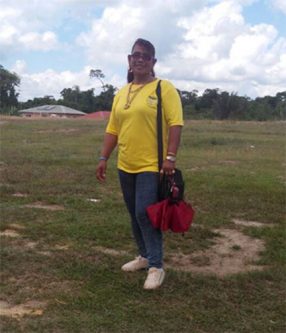Port Kaituma is one of several gold-mining communities that has had to adjust to the vicissitudes of the gold-mining industry, not least the instability in gold prices and the attendant fluctuation of the fortunes of gold miners on the one hand, and the strengthening of environmental, safety and health and other regulations that compel a higher level of operational compliance on the other.
In areas that include communities like Big Creek, Five Star, Eye Lash, Monasi, Baramita, Fourteen Miles, Tiger Creek and Arakaka, the smaller miners are feeling the heat. Similar small gold-mining operations run by intrepid seekers from neighbouring Brazil and Venezuela are beginning to fold. The larger, more stable mining operations persist on the relative comfort of the cushion they had created over the years.
If it may take many more years for miners from the coast to understand and respond to the changes that are taking place in the gold-mining industry, there is evidence in some parts of the interior, Port Kaituma and some of its satellite communities being numbered amongst them, that survival dictates that there be options to gold.

Stephanie Miguel lives at Canal Bank, a community situated on the bank of the Kaituma River. Canal Bank has about 1,000 residents and traditionally, mining, logging and farming used to be the pillars of its economy. Miguel herself used to be a gold miner. These days she may not have given up entirely on gold but she has been more than persuaded of the virtue of looking elsewhere. She has since opened a wash bay in Port Kaituma to cater to the needs of the increasing level of vehicular traffic serving the gold mining industry. Simultaneously, she has become active in the social and developmental affairs of her community.
When Stabroek Business spoke with Miguel last week she reported that she was not the only miner who has ‘shifted gears.’ Other small miners are returning to farming and to selling their produce at Pork Kaituma water front.
Early this year a $5 million proposal was made to the United Nations Development Programme (UNDP) for the creation of the Canal Bank Poultry Project, intended to be an employment-generating initiative targeting the rearing and marketing of chickens. The first tranche of $3 million has already been disbursed for land-clearing, the construction of chicken pens, a hut and a building for the plucking of the chickens. Those exercises are now complete and the residents are anticipating the release of further disbursements for the acquisition of chicks and feed.
Miguel said the project is targeting the community’s school-feeding programme at Canal Bank Primary School which caters for 160 children. More than that, she disclosed, there is a considerable demand for chicken at Port Kaituma, Canal Bank and amongst the miners. At present chicken is purchased from Georgetown and transported to Port Kaituma.
For youngsters who may have dropped out of school there is the option of a second chance through the vehicle of the Hinterland Employment and Youth Service (HEYS) initiative, a Ministry of Indigenous Affairs programme that seeks to empower youths through skills training. After training, they will each receive a grant of $60,000 to invest in a business initiative of their choice. Currently, 20 youths from Canal Bank are engaged in a six-month skills training project in catering, construction among others. At the end of the six months they will each be given the grant.
Miguel concedes that in the short-term at least, these projects could be building blocks to a potentially wider initiative designed to create alternatives to the uncertainties of the gold-mining industry. Equally important is the role that some of these alternative initiatives play in teaching life skills that may well serve to sustain individuals and families in instances where they may not have secured a share of the good fortune which the gold-mining industry selectively dispenses.





